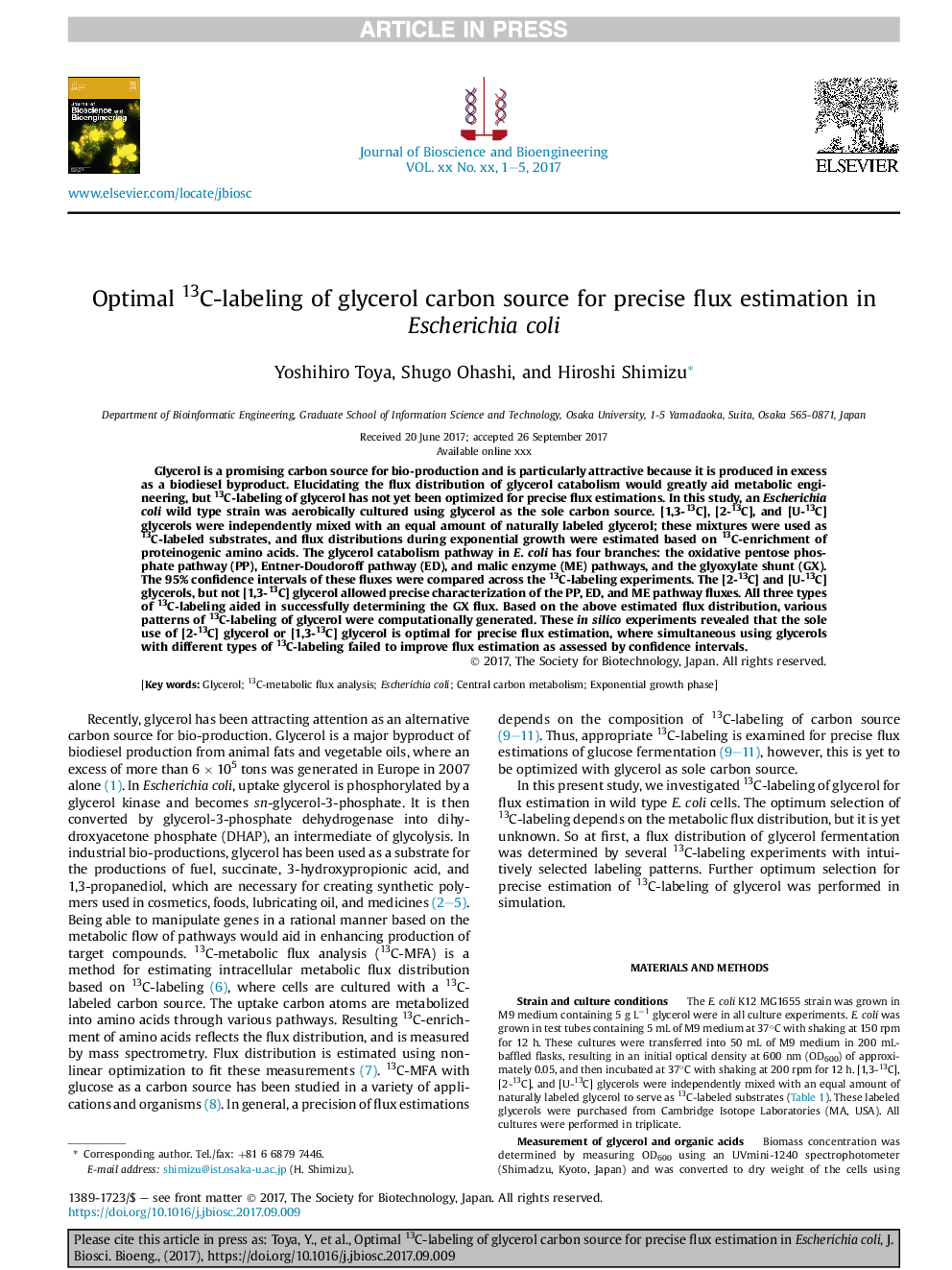| Article ID | Journal | Published Year | Pages | File Type |
|---|---|---|---|---|
| 6489925 | Journal of Bioscience and Bioengineering | 2018 | 5 Pages |
Abstract
Glycerol is a promising carbon source for bio-production and is particularly attractive because it is produced in excess as a biodiesel byproduct. Elucidating the flux distribution of glycerol catabolism would greatly aid metabolic engineering, but 13C-labeling of glycerol has not yet been optimized for precise flux estimations. In this study, an Escherichia coli wild type strain was aerobically cultured using glycerol as the sole carbon source. [1,3-13C], [2-13C], and [U-13C] glycerols were independently mixed with an equal amount of naturally labeled glycerol; these mixtures were used as 13C-labeled substrates, and flux distributions during exponential growth were estimated based on 13C-enrichment of proteinogenic amino acids. The glycerol catabolism pathway in E. coli has four branches: the oxidative pentose phosphate pathway (PP), Entner-Doudoroff pathway (ED), and malic enzyme (ME) pathways, and the glyoxylate shunt (GX). The 95% confidence intervals of these fluxes were compared across the 13C-labeling experiments. The [2-13C] and [U-13C] glycerols, but not [1,3-13C] glycerol allowed precise characterization of the PP, ED, and ME pathway fluxes. All three types of 13C-labeling aided in successfully determining the GX flux. Based on the above estimated flux distribution, various patterns of 13C-labeling of glycerol were computationally generated. These in silico experiments revealed that the sole use of [2-13C] glycerol or [1,3-13C] glycerol is optimal for precise flux estimation, where simultaneous using glycerols with different types of 13C-labeling failed to improve flux estimation as assessed by confidence intervals.
Keywords
Related Topics
Physical Sciences and Engineering
Chemical Engineering
Bioengineering
Authors
Yoshihiro Toya, Shugo Ohashi, Hiroshi Shimizu,
